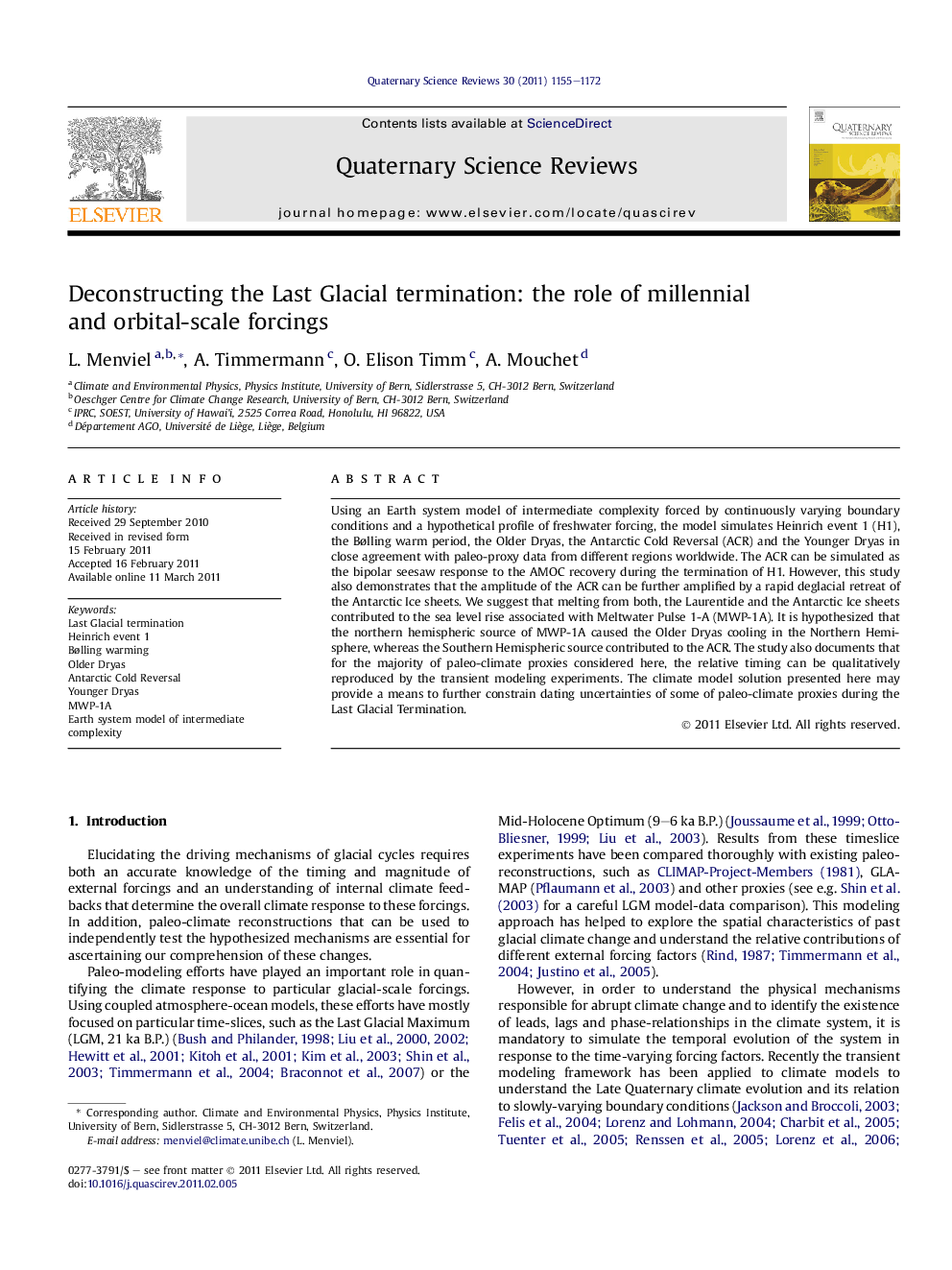| Article ID | Journal | Published Year | Pages | File Type |
|---|---|---|---|---|
| 4735526 | Quaternary Science Reviews | 2011 | 18 Pages |
Using an Earth system model of intermediate complexity forced by continuously varying boundary conditions and a hypothetical profile of freshwater forcing, the model simulates Heinrich event 1 (H1), the Bølling warm period, the Older Dryas, the Antarctic Cold Reversal (ACR) and the Younger Dryas in close agreement with paleo-proxy data from different regions worldwide. The ACR can be simulated as the bipolar seesaw response to the AMOC recovery during the termination of H1. However, this study also demonstrates that the amplitude of the ACR can be further amplified by a rapid deglacial retreat of the Antarctic Ice sheets. We suggest that melting from both, the Laurentide and the Antarctic Ice sheets contributed to the sea level rise associated with Meltwater Pulse 1-A (MWP-1A). It is hypothesized that the northern hemispheric source of MWP-1A caused the Older Dryas cooling in the Northern Hemisphere, whereas the Southern Hemispheric source contributed to the ACR. The study also documents that for the majority of paleo-climate proxies considered here, the relative timing can be qualitatively reproduced by the transient modeling experiments. The climate model solution presented here may provide a means to further constrain dating uncertainties of some of paleo-climate proxies during the Last Glacial Termination.
► We perform a transient simulation of the last deglaciation including millennial-scale events. ► Modelling results are compared with paleoproxies. ► H1, the Antarctic Cold Reversal (ACR) and the Younger Dryas are well reproduced. ► The AMOC recovery after H1 and a freshwater input in the Southern Ocean leads to the ACR. ► The MWP-1A leads to the Older Dryas in the North and the ACR in the South
